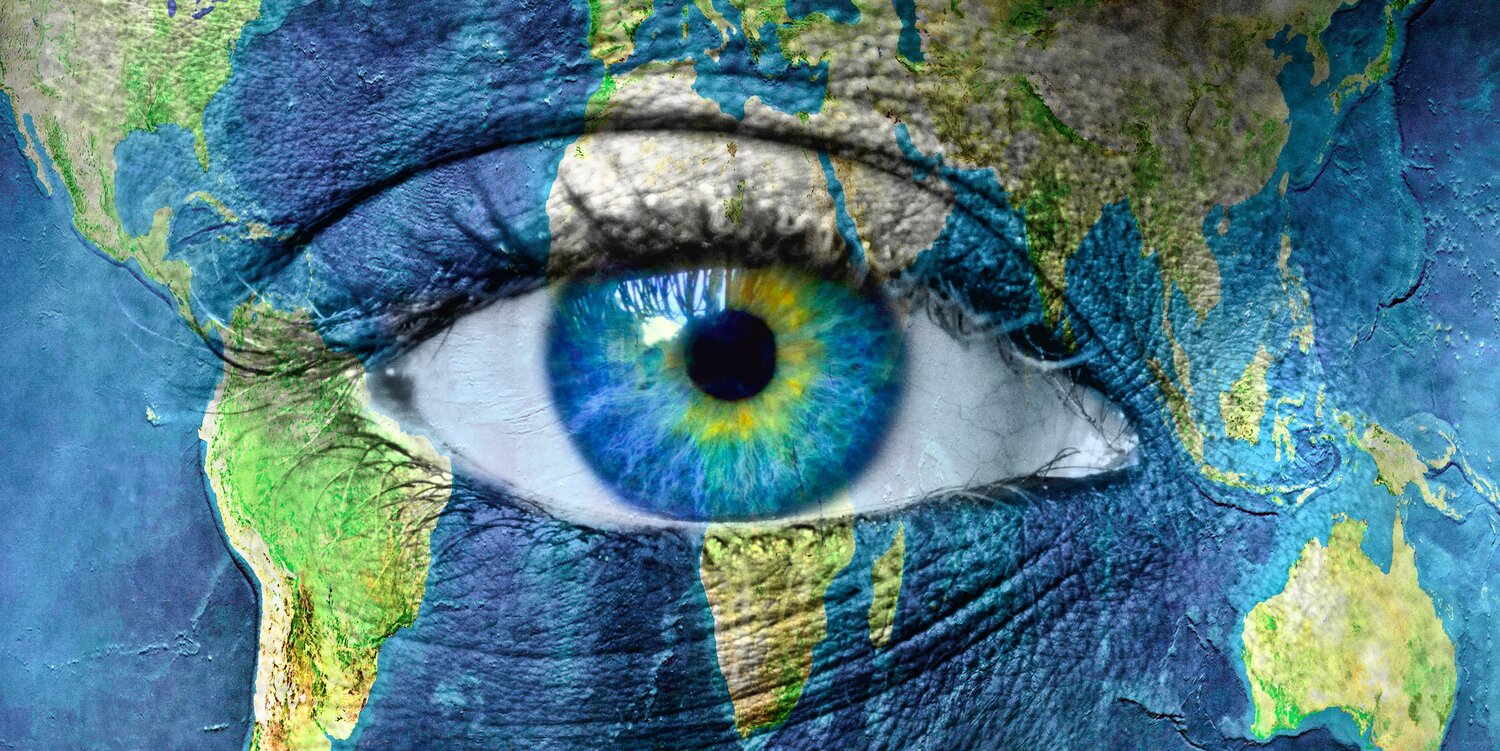近年、急速なグローバル化と情報技術の発展により、私たちの生活は国境を越えて繋がりやすくなりました。社会や職場、身近なコミュニティでも、多様な背景を持つ人々と関わる機会が増えています。このような時代に、子どもたちが“自分と異なる価値観や文化を自然に受け入れられる人”として成長することは、とても大切です。
しかし、子どもに「多文化理解」と言葉で伝えても、それを実感として捉えられるかどうかは別問題です。実際に体験したり、身近なところで小さな「違い」に気づいたり、他の国や地域に思いを馳せるきっかけがなければ、「世界には多様な文化がある」という事実はなかなか実感につながりません。
そこで本記事では、「多文化を知ると子どもがどう変わるのか?」を軸に、家庭でできる実践的な国際感覚の育て方をご紹介します。小さな家庭の取り組みが、将来の子どもに大きな変化をもたらす可能性があるのです。身近なヒントを取り入れ、日々の生活のなかに「世界を感じる瞬間」を作ってみましょう。
1. 多文化を知ると広がる子どもの世界
1-1. 自己理解が深まる
異なる文化に触れることは、自分たちが当たり前だと思っていた価値観や習慣を振り返る機会にもなります。たとえば、日本ならではの挨拶や食事のマナーが、実は世界的には少数派であることもあります。多文化体験を通じて「日本のここが面白い」「自分はこんなことを大切にしていたんだ」と再認識することで、逆説的に自分自身や自国の文化への理解が深まります。
1-2. 思いやりと共感の心が育つ
世界には言語や宗教、生活様式が異なる人々がたくさんいます。その違いを受け止めるためには、相手の立場や背景を想像し、尊重する気持ちが不可欠です。子どもは自分の身近にある「違い」に気づいたとき、初めて「どうしてそうなのだろう?」と考え始めます。このプロセスこそが思いやりや共感の土台となるのです。小さな気づきの積み重ねが、相手の視点を想像できる人間性を育みます。
1-3. 問題解決力や創造性が向上する
異なる価値観や文化が交わるところでは、当然ながら摩擦や誤解も生まれやすくなります。子どもがそうした状況に直面したとき、相手と対話し、お互いに歩み寄る解決策を見つける力が求められます。多文化に触れる経験は「一つの正解」にこだわらない柔軟な思考を育み、多角的に物事を見る視点を養ってくれます。この柔軟性や創造性は、将来どのような道に進んでも必ず役に立つでしょう。
2. 家庭でできる多文化体験のアイデア
子どもにとって、最初の社会である家庭は「安心してチャレンジできる場所」であってほしいものです。多文化体験というと“大きなこと”を想像しがちですが、日常生活でもちょっとした工夫でいくらでも多文化に触れるきっかけをつくることができます。
2-1. 世界の料理を楽しむ
もっとも身近な“文化”といえば食事。世界各国の料理を家で再現してみることで、自然にその国の文化に興味がわきます。たとえば、イタリアン、インド料理、メキシコ料理、タイ料理など、スパイスや食材の使い方の違いは作るだけでもワクワクします。「どうしてこんなに辛いの?」「このハーブはどこから来るの?」など、親子の会話が弾むきっかけにもなるでしょう。
また、食事の作法や食器の使い方が国によって違う点にも注目すると、新たな発見があります。フォークとナイフが主流の国もあれば、手で食べる文化を大切にしている地域もあります。そうした多様性を認め合う姿勢は、単なる「食」の話題に留まらず、他の多文化理解にもつながります。
2-2. 映画やドキュメンタリー、アニメーションを活用する
映像作品は、音と映像を通じてその国の雰囲気や言葉、人々の生活をリアルに感じられる優れた教材です。親子で一緒に外国の子ども向け映画やドキュメンタリーを観れば、「あれ?日本とは街の風景が全然違うね」など、視覚的な違いに気づきやすくなります。特にドキュメンタリーは現実の暮らしを映し出すので、より具体的な文化の違いを感じられるでしょう。
視聴後に「どのシーンが印象的だった?」と子どもに問いかけ、感想を共有する時間を持つと、ただ見ただけで終わらずに学びが深まります。子どもが興味を示したテーマがあれば、さらに関連情報を一緒に調べてみるのも良いですね。
2-3. 多国籍の音楽や絵本、児童文学の紹介
音楽や絵本は、言葉や理屈を超えて子どもの感受性に直接訴えかける力を持っています。例えば、言葉はわからなくても、メロディやリズムで「なんだか楽しい」「少し悲しい」など感情を動かされることがありますよね。世界の民謡や童謡などを親子で聴いたり、一緒に歌ってみたりすることで、言語的な壁を超えた感覚を育むことができます。
また、絵本や児童文学は、その国固有の伝承や価値観を背景に持っています。日本の昔話と海外の昔話を比べてみると、登場人物の考え方や行動様式に違いがあることに気づくはずです。そこから「なぜ日本ではこういう話が昔話になっているの?」「海外の人はどんなことを大切にしているの?」と問いを立てる機会が生まれます。
2-4. オンラインでの国際交流を試してみる
インターネットが普及した現代では、オンラインを通じて海外の人々と繋がるハードルが格段に下がりました。子ども向けに設計された国際交流プラットフォームやオンライン学習サービスも存在します。ビデオ通話やメッセージのやりとりを通じて、実際に外国の友達を作ることも夢ではありません。言語の学習だけでなく、お互いの学校生活や好きなゲーム、アニメなどを話題にしてみると、自然な会話が生まれ、リアルな多文化体験になります。
2-5. “世界の行事カレンダー”を取り入れる
日本のカレンダーには祝日や季節の行事がたくさんありますが、実は世界にもその国ならではの祝祭日やイベントが数多く存在します。たとえば、中国の春節(旧正月)、アメリカのサンクスギビング、インドのディワリ(光の祭典)など、行事の由来や伝統的な過ごし方を調べてみると面白いものです。大がかりに真似をする必要はありませんが、そうした行事を簡単に家でお祝いしてみたり、伝統的な料理を少しだけ作ってみたりするだけでも、子どもには大きな学びになります。
3. 多文化理解で変わる子どもの姿
家庭での取り組みを通じて多文化に触れ始めた子どもには、どのような変化が現れるのでしょうか。ここでは、多文化理解が深まることで期待できる成長の一部をご紹介します。
3-1. 好奇心と探究心が旺盛になる
「自分と違うもの」に出会う機会が増えると、自然と「もっと知りたい」という気持ちが芽生えます。未知の国の暮らし、言葉、遊び方、音楽など、興味をもった分野をさらに自分で調べたり、深堀りしたりする姿が見られるようになります。これは学習面でもプラスに働き、教科書だけでは得られない生きた知識を吸収し、より広い視野で物事を捉えるきっかけとなります。
3-2. 他者への理解が深まり、コミュニケーションが豊かになる
多文化理解が進むと、子どもは「自分とは違う背景を持つ人もいる」という前提を自然に持つようになります。そうすると、初対面の相手や外国から来た友達に対しても「どんな文化や言語を持っているのだろう?」と興味や尊重の気持ちを抱きやすくなります。結果としてコミュニケーションがスムーズになり、人間関係の幅が広がるでしょう。
3-3. 柔軟な思考力と適応力が身につく
文化の違いを認め、楽しむ過程では「正しさが一つではない」ことを体感します。たとえば食べ物の味つけひとつをとっても、国や地域、個人によって好みが異なるのは当たり前です。子どもは「違う=ダメ」ではなく「違いを認めること」を学ぶことで、他の場面でも新しい状況や価値観に柔軟に対応できるようになります。この柔軟性は、将来、グローバル社会や多様なコミュニティで生きるうえで非常に有利な武器になるはずです。
4. 親として大切にしたい姿勢
子どもが多文化理解を深めるうえで重要なのは、親自身が多様性を歓迎し、楽しむ姿勢を見せることです。親が「違って当たり前」をポジティブに捉えていると、子どもはその姿勢を自然に学びます。
4-1. 興味を一緒に楽しむ・学ぶ
子どもが「この国の音楽が面白い」「外国の子どもたちはどんなおやつを食べているの?」などと言ったときに、「そんなの知らない」や「今は忙しいからあとで」と否定や後回しにしてしまうと、せっかくの好奇心が冷めてしまいます。時間の許す限り一緒に調べたり、楽しんだりしてみましょう。親子で学び合うことで、子どもは「新しいものに対してオープンでいるって楽しい」と感じられるようになります。
4-2. 違いをジャッジしない
多文化を理解する際に大切なのは、「それはおかしい」という判断をせず、まずは受け止めてみることです。たとえば、食文化の違いに驚いたとしても、「どうしてこんな食べ方をするんだろうね」と興味を持つ姿勢で語りかければ、子どもは「世界には色んなやり方があるんだ」と理解しやすくなります。違いを面白がり、尊重しようとする姿勢を親が示すことが、子どもの素直な受容力を育みます。
4-3. 自国文化への誇りも育む
多文化に興味を持つことは決して「自国の文化を否定する」ことではありません。むしろ、他文化を知るからこそ「日本の文化や習慣にも素晴らしいところがある」と改めて気づくことができます。海外の人に日本文化を説明するときなどに、自分自身が理解していないと上手く伝えられないこともあるでしょう。子どもと一緒に「日本の行事」や「日本の昔話」を振り返る機会を持ち、自国の魅力に目を向けることも大切です。
まとめ:家庭から始まるグローバルな未来
世界がどんどん近づいている現代において、多文化理解は子どもにとって必要不可欠なスキルと言えます。もちろん、いきなり海外へ飛び出すことだけが選択肢ではありません。むしろ、日常の生活のなかで気軽に取り入れられる多文化体験こそが、子どもにとって「学びの種」となり得るのです。
食事や音楽、映像作品、オンライン交流、各国の行事など、身近なツールを使って世界を“感じる”時間をつくる。それは子どもの興味を刺激し、未知の世界へといざなう切り口となるでしょう。そして、子どもが他文化への探究心を膨らませるとき、そこには必ず「自分とは違うものを認める寛容性」「正解が一つでないことを理解する思考の柔軟性」が生まれます。
また、多文化を理解することは、「自分自身や自国文化をより深く知る」ことと表裏一体です。違いを楽しみ、共通点を見つけ、そこから生まれる新しい考え方を学ぶプロセスは、子どもを大きく成長させる鍵となります。
親としては、まず自分自身が多文化に対してオープンな姿勢を示すことが大切です。子どもと一緒に世界のいろいろな情報を追いかけ、ともにワクワクし、学び、発見していきましょう。そうした親子の対話と経験の積み重ねが、やがて子どもが「グローバルな未来」を生きるうえでの基盤となります。小さな家庭の取り組みが、大きな世界への第一歩。ぜひ、日常から多文化を取り入れて、子どもの可能性を広げていきましょう。
How Multicultural Awareness Changes Children: Fostering a Global Mindset at Home
In recent years, rapid globalization and advancements in information technology have made our lives more connected across borders. Whether at work, in society, or within local communities, we encounter people from diverse backgrounds more frequently. In this era, it is crucial for children to grow into individuals who can naturally accept values and cultures different from their own.
However, merely telling children about “multicultural understanding” does not necessarily help them internalize it. Without real-life experiences or small, everyday moments that highlight “differences,” the fact that “there are many cultures in the world” can remain abstract.
This article will explore how children change when they become aware of multiple cultures, centering on practical ways to nurture a global mindset at home. Even small efforts in the home environment can lead to significant transformations in a child’s future. Let’s incorporate simple ideas to bring “worldly moments” into daily life.
1. How Multicultural Awareness Expands a Child’s World
1-1. Deepening Self-Understanding
Learning about different cultures can also be an opportunity to reconsider the values and customs we take for granted. For instance, certain greetings or dining manners unique to Japan might be an exception in global terms. Through experiences with multiple cultures, children can discover something like, “This aspect of Japan is fascinating,” or “I didn’t realize I cared so much about this custom.” This paradoxically helps them deepen their understanding of themselves and their national culture.
1-2. Fostering Empathy and Compassion
Around the world, people have diverse languages, religions, and lifestyles. To accept these differences, one must imagine and respect the other person’s background. Children first begin to contemplate “Why is it this way?” when they notice a difference in their immediate surroundings. This process is the foundation of empathy and compassion. Small moments of realization accumulate, helping develop the ability to see from another’s perspective.
1-3. Boosting Problem-Solving and Creativity
Where different values and cultures intersect, misunderstandings or conflicts can easily arise. When children face such situations, they need to engage in dialogue and find solutions that involve compromise. Experiencing diverse cultures fosters flexible thinking that does not cling to a single “correct” answer, and it nurtures the skill to view matters from multiple angles. This flexibility and creativity will surely serve them in whatever path they pursue in the future.
2. Ideas for Experiencing Multiculturalism at Home
Ideally, the home—often a child’s first social environment—should be a place where they feel safe to explore and experiment. Though “multicultural experiences” may sound like a big undertaking, we can incorporate small opportunities into everyday life to introduce children to the richness of global diversity.
2-1. Enjoy World Cuisines
One of the most accessible forms of “culture” is food. By recreating dishes from different countries at home, children naturally grow curious about those cultures. For instance, trying Italian, Indian, Mexican, or Thai cuisine and observing how ingredients and spices differ can be exciting in itself. Conversations like “Why is this dish so spicy?” or “Where does this herb come from?” will likely fill the kitchen with curiosity.
Focusing on table manners and utensil use specific to different countries can also yield fascinating discoveries. Some cultures primarily use forks and knives, while others eat by hand. Recognizing and respecting these variations extends beyond food, enhancing overall intercultural awareness.
2-2. Use Films, Documentaries, and Animations
Films allow you to experience the language, atmosphere, and daily life of another country through visuals and sound. Watching foreign children’s movies or documentaries together can highlight differences such as “Look at how different their city looks compared to ours.” Documentaries in particular depict real-life situations, allowing children to observe specific cultural distinctions more concretely.
After viewing, having a conversation about “Which scene left the biggest impression?” allows children to deepen their learning beyond mere watching. If a child shows interest in a certain topic, exploring related information together can further enrich their understanding.
2-3. Introduce Multinational Music, Picture Books, and Children’s Literature
Music and picture books can directly appeal to a child’s sensitivity, transcending words and logic. Even without understanding the lyrics, a melody or rhythm can evoke emotional responses like “This is fun” or “This feels sad.” Listening to or singing folk songs from around the world together fosters a sense of wonder that goes beyond language barriers.
Moreover, picture books and children’s literature often reflect the values and lore unique to their country of origin. Comparing Japanese folktales with stories from other cultures reveals differences in how characters think or behave. It may prompt questions like “Why is this story a traditional tale in Japan?” or “What do people in other countries treasure in their stories?”
2-4. Try Online International Exchange
Thanks to the internet, it’s much easier today to connect with people in other countries. Various platforms and online learning services are designed specifically for children’s international interactions. Through video calls or messaging, children can actually make foreign friends. Beyond just learning the language, conversations about everyday school life, favorite games, or anime can provide a natural setting for cross-cultural experiences.
2-5. Incorporate a “World Events Calendar”
Japanese calendars are full of holidays and seasonal events, but many unique holidays and festivals also exist around the world. For example, the Chinese New Year (Spring Festival), Thanksgiving in the United States, and Diwali (the Festival of Lights) in India. Simply researching how and why these are celebrated can be incredibly interesting. You don’t have to replicate these events perfectly at home, but small gestures—like trying a traditional dish or having a modest celebration—can offer valuable learning experiences for children.
3. How Children Grow Through Multicultural Understanding
How do children change once they begin to experience different cultures at home? Below are a few examples of the growth we can expect from deeper multicultural awareness.
3-1. Developing Stronger Curiosity and Inquisitiveness
When children frequently encounter things “different from themselves,” they naturally develop a desire to “learn more.” Whether it’s about an unfamiliar country’s lifestyle, language, pastime, or music, their curiosity and investigative spirit ignite. They might start researching on their own or delve deeper into a specific interest. This motivation can positively impact their academic life, enabling them to absorb practical knowledge beyond textbooks and see the world through a broader lens.
3-2. Deepened Understanding of Others and Richer Communication
With a stronger grasp of multicultural perspectives, children come to inherently understand that “some people have backgrounds different from my own.” As a result, they become more open and respectful when meeting someone new or interacting with foreign classmates, thinking “What culture or language do they have?” This mindset leads to smoother communication and broader social connections.
3-3. Acquiring Flexible Thinking and Adaptability
Through celebrating and embracing cultural differences, children realize firsthand that there is no single “correct” way. For instance, even tastes in cuisine differ across countries, regions, and individuals. Recognizing that “different doesn’t mean wrong” teaches children to be open to new situations and values in various contexts. This flexibility will be a powerful asset in their future, especially as they navigate global and diverse communities.
4. The Parent’s Role in Supporting Multicultural Awareness
When it comes to helping children deepen their multicultural awareness, it is crucial for parents themselves to welcome and enjoy diversity. If parents view “differences” in a positive light, children naturally adopt that attitude as well.
4-1. Learn and Explore Together
If a child says, “This country’s music is so interesting” or “What snacks do kids in other countries eat?”, responding with dismissals like “I don’t know” or “I’m busy; maybe later” can dampen their curiosity. Instead, explore these interests together when time permits. When parents learn with their children, kids discover the joy of being open to new things.
4-2. Avoid Judging Differences
Key to multicultural understanding is refraining from labeling something as “strange” before trying to understand it. For instance, if you find a particular dining culture surprising, approach it with curiosity—“I wonder why they eat this way?”—instead of judgment. By modeling respect and genuine interest in differences, parents encourage children’s openness and receptivity.
4-3. Cultivate Pride in One’s Own Culture
Fostering an interest in other cultures does not mean rejecting one’s own. On the contrary, by learning about other cultures, children become more aware of the appealing aspects of their own traditions. When explaining Japanese culture to someone from another country, for example, parents and children alike might realize they lack sufficient knowledge about their own customs and look them up. Taking time to reflect on Japan’s holidays, folktales, and unique practices helps build a healthy pride in one’s heritage.
Conclusion: Building a Global Future from Home
In our ever-shrinking world, multicultural understanding is an essential skill for every child. Of course, you don’t necessarily have to send your child abroad right away. In fact, easily accessible multicultural experiences integrated into daily life can become the “seeds of learning” for children.
By incorporating world cuisine, music, film, online interactions, and international holidays, we can create occasions for children to “sense” the world. These activities spark their curiosity and encourage them to explore the unknown. As children delve deeper into other cultures, they develop “tolerance for differences” and “flexibility in understanding that there’s more than one right answer.”
Moreover, understanding other cultures goes hand in hand with rediscovering the depth of one’s own culture. Embracing differences, finding common ground, and learning new perspectives lead to remarkable growth in children.
Above all, it’s important for parents to show their own openness to cultural diversity. By pursuing new information together with your child, getting excited, learning, and sharing discoveries, you are laying the groundwork for them to thrive in a global future. A small effort at home can be a vital first step into a big world. Embrace multiculturalism in everyday life, and watch your child’s possibilities expand!




コメント